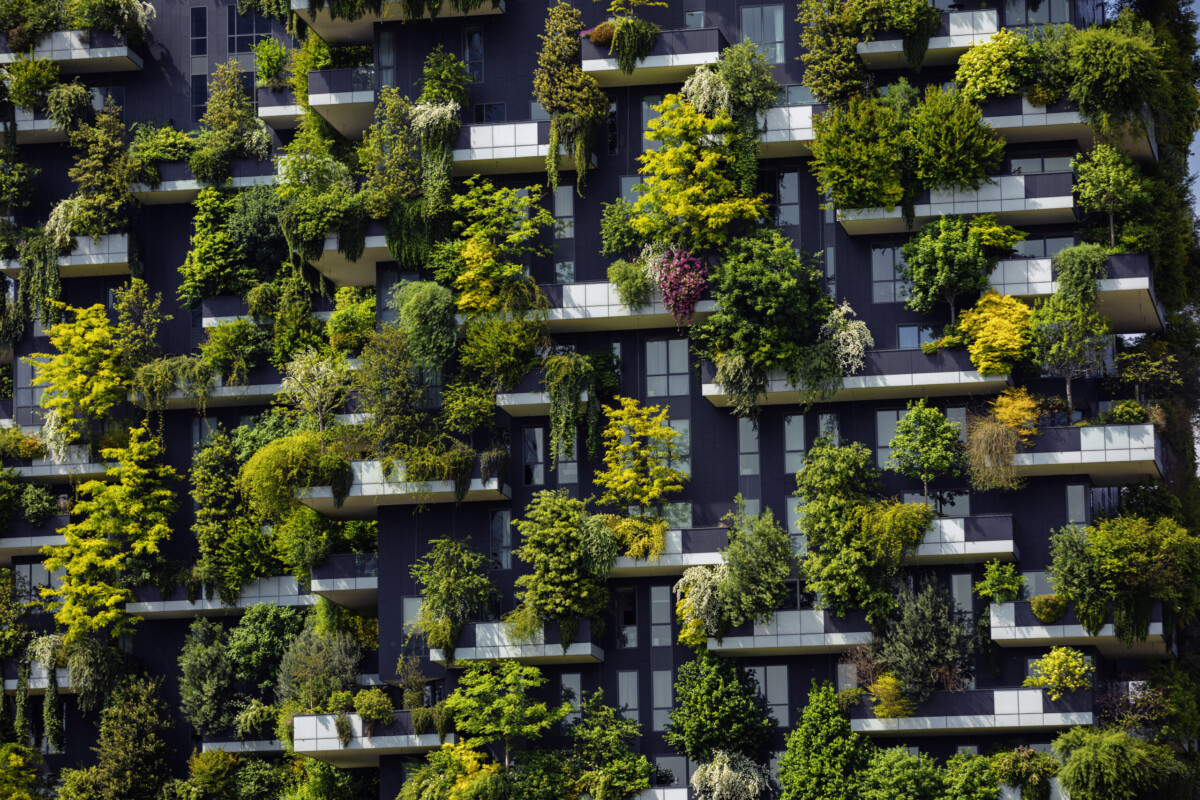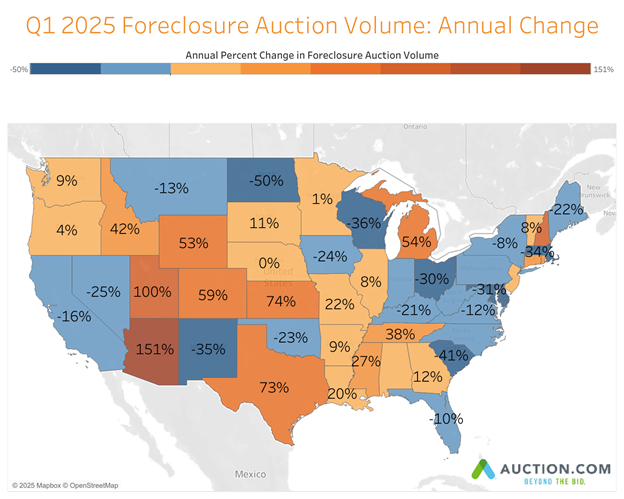After the city lost big during the economic downturn, experts are now betting on sustainable growth.
Las Vegas and southern Nevada, after suffering some of the worst of the Great Recession, are experiencing undeniable economic growth.
It’s a welcome change from a few years ago, when the city’s unemployment hit 15 percent, home values plummeted, and the foreclosure rate was six times higher than the national average. By 2012, more than 70 percent of Vegas-area homeowners with a mortgage were underwater.
And now? In June, Las Vegas led the nation for the fastest gains in home prices, according to the S&P CoreLogic Case-Shiller U.S. National Home Price NSA Index. On average, prices were 13 percent higher than they were a year earlier. The national average for the same period was 6.2 percent.
In July, single-family homes sold for a median price of $290,000, up 11.5 percent compared to 12 months prior, the Greater Las Vegas Association of REALTORS (GLVAR) reported. That’s below the recent market high of $315,000 that was set in June 2006, but well above the low point of $118,000 in January 2012.
Condos and townhomes, meanwhile, commanded a median price of $166,000 in July, about 20 percent higher than a year prior.
Rents were up, too, showing an increase of 3.2 percent in July over a year earlier, Zillow reported.
Everywhere you turn in the Vegas metro, you can spot signs of progress in just about every type of real estate niche, from fix and flips to large-scale commercial developments.
“We feel it’s pretty strong,” said Bret Berglund, managing director at Mojave Capital, a Las Vegas-based private lender. “The home inventory’s tight, and the homebuilders are trying to keep pace.”
Strong Demand for New Homes, Multifamily
Some have argued that Las Vegas might be too hot. Earlier in 2018, Fitch Ratings labeled Vegas the most overvalued housing market in the country.
But the rate of growth, while strong, is not as heated as what the region saw before the last recession—for example, between 2000 and 2006, Vegas home prices increased more than 125 percent, Zillow found. The GLVAR also notes that home prices started to level off this summer.
Ultimately, Berglund said, current conditions are going to be more sustainable.
Mojave Capital, founded in 2007 by managing partner Vance Petersen, offers commercial financing to real estate investors, developers and builders, especially on deals involving distressed and transitional properties where time is a factor.
The firm can handle a range of projects, though, including retail, office, development and multifamily. Recently, it provided $3.5 million for a three-story office and retail development in the Las Vegas Arts District, as well as $1.9 million for a 27-unit multifamily project in downtown.
“People are realizing Las Vegas is a real place,” Petersen said. “It’s not just a tourist destination.”
Interest in multifamily is particularly strong right now, with bidding wars on some units, so the Mojave Capital team has seen more investors seeking to buy and modernize distressed multifamily properties.
Demand for new homes is also high. According to Home Builders Research, closings of new homes increased by 19 percent in the first half of 2018 compared to a year earlier. Construction permits were also 30 percent higher during the first half of 2018, and purchases of land were up, too.
“We’re glad to see the housing supply increasing slightly in recent months, but our inventory is still very tight,” GLVAR President Chris Bishop said in a news release. “That tight supply has been dragging down home sales. At this rate, we’re on pace to sell fewer existing homes this year than we did last year. And it may be some time before local home prices get back to their all-time peak from 2006.”
According to the GLVAR, cash purchases represented about 22.6 percent of real estate deals in July, compared to 24.6 percent one year earlier. Investors are still an active part of the market, though not to the extent they were in, say, February 2013, when cash-only deals were 59.6 percent of purchases.
(One thing to note: Cash deals are usually a good proxy for measuring investor activity, but in Las Vegas, many cash buyers are purchasing a vacation home, Mojave Capital said.)
Growth in Population, Employment
Another reason for optimism about Las Vegas’ prospects? The population is increasing faster than just about any other city in the country. Earlier this year, the Las Vegas Global Economic Alliance (LVGEA) reported that 4.9 people on average relocated to the city every hour.
Migration is a big factor. More Californians, frustrated by the high cost of living in their home state, are moving next door to Nevada. About 34 percent of the region’s new residents are people who used to live in the Golden State.
The region is adding new jobs at a faster clip than the rest of the country, the LVGEA reported. For the 12 months ending in June, southern Nevada added about 28,800 jobs, representing 3 percent growth. Government and construction employers led the way, adding 5,900 and 5,400 jobs respectively.
Leisure and hospitality, of course, accounted for a solid part of the growth, too—3,200 jobs. Tourism directly supports about 25 percent of the region’s jobs, according to the Las Vegas Convention and Visitors Authority (LVCVA). Add in indirect spending, and about 40 percent of southern Nevada’s jobs are tourism-supported.
A U.S. economy that is healthy overall can mean good things for Las Vegas: Last year, more than 42.2 million visitors traveled to Las Vegas, the third-highest total on record, the LVCVA said.
In rough times, though, the tourism industry is particularly vulnerable to slowdowns. That’s why the region’s business and civic leaders are taking steps to diversify the economy, which already boasts technology companies like Zappos.com and Switch. Manufacturing, aerospace and logistics are all opportunities for further growth.
Last year, the new University of Nevada, Las Vegas Medical School welcomed its first class of students, and officials are raising money for a $250 million building. The state has one of the nation’s lowest rates of doctors to population, and leaders believe the new program will attract more medical talent to the area.
While there’s more to be done, experts say, diversification efforts are starting to deliver results.
“Even if there is a slowdown,” Petersen said, “we won’t see anything like the last one.”
Keep Diversifying, Keep Moving Forward
Both Petersen and Berglund are optimistic about the region’s prospects over the next 24 to 36 months, in part because of several large projects in the construction pipeline. Those include some of the largest resorts to open since before the Great Recession.
For example, developers plan to spend about $3 billion building out The Drew, a 4,000-room hotel and resort on the Strip. The property began life as the Fontainebleau, but construction was left unfinished for years because of the recession. Once it’s operational in 2020, The Drew will add about 7,000 permanent jobs to the Las Vegas workforce. And that’s not counting the more than 3,500 people who will work on the construction.
Another hotel project, Resorts World, is under construction on the Strip and should open in 2020 or 2021. The project is expected to cost north of $7 billion.
The Strip is an amazing amenity for locals—there’s always world-class entertainment available—but there’s so much to do in Las Vegas that isn’t centered on the hotel and casino district.
The Raiders are building a $1.8 billion stadium complex in time for the NFL franchise’s 2020 season. The facility could also help Las Vegas attract large concert tours and special events like the Super Bowl, and help the city continue building a reputation as a major sports town.
The area is already enjoying a burst of energy from its new NHL team, the Vegas Golden Knights. This spring, the Knights ended their inaugural season with a playoff run that went all the way to the Stanley Cup Finals before the team lost to the Washington Capitals. The Knights’ presence has added a $100 million payroll to the local economy and has boosted Vegas’ profile as a sports city.
And the Las Vegas 51s, the city’s minor league baseball team, is getting a new $150 million stadium, which should be open for business. The Las Vegas Ballpark will be in Summerlin, one of the region’s most in-demand communities and home to a popular shopping district.
“Those are the kind of indicators, moving forward, that will keep diversifying and moving Vegas forward,” Berglund said. ∞











Leave A Comment